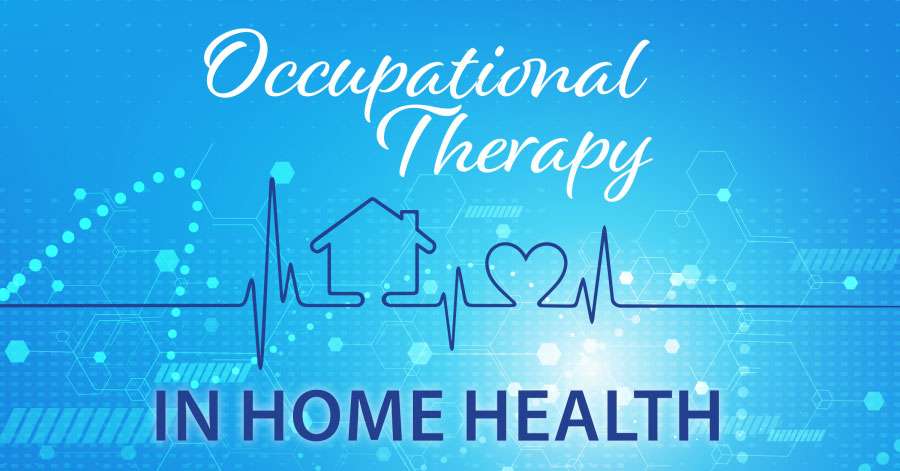Anxiety is oneof the most common mental health issues encountered in clinical practice today and probably one of the most misunderstood, often neglected and minimized mental health issue. Just browse any psychotherapy website, and I bet you’ll find anxiety mentioned in every single one of them. But what is anxiety to psychoanalysis? How do we understand it from a psychoanalytic point of view and what can we do to overcome it?
Anxiety defined…
Everyone experiences anxiety to a certain degree. In fact, it is well proven in the field of psychology that moderate levels of anxiety are actually beneficial and foster learning, problem-solving and productivity. However, when the anxiety becomes too high, relative to our resources and abilities to cope with stressors and changes in the environment, it becomes overwhelming and can cause one of three responses – fight, flight or freeze (I know of a very interesting Anxiety Curve Model that explains this and can be applied to various issues in adult as well aschild and adolescent psychotherapybut I will save it for a future post).
Manifestations of anxiety
Anxiety manifests in various forms, some of which are classified in the Diagnostic and Statistically Manual of Mental Disorders (DSM) and some aren’t. Think about what you do when you are “nervous” or “worried,” which is really another way to say that you are anxious. Some people play with their fingers, bite their nails or crack their knuckles, others clean or keep themselves busy; somedrink or use substances, while others try to meditate or journal.
We all have established methods to defend against or cope with feeling anxious but sometimes, they are not enough and when that happens, the anxiety manifests itself in what in psychoanalysis we call symptoms. Here are several examples:
Panic attacks
Probably the most noticeable and forthright manifestation of anxiety is when you have a panic attack – your heart starts pounding, you cannot breathe, your body starts sweating, your hands are shaking, thoughts start running through your head, you feel like you are having a heart attack or you are about to die and you are absolutely terrified.
Inattention and difficulty focusing
Another manifestation of anxiety is difficulty focusing and staying on task at work, school or home. You may find yourself having a hard time starting a project, finishing a project or being easily distracted, unmotivated and unable to get yourself organized.
Difficulties with sleep
Struggling with falling asleep and staying asleep is another common manifestation of anxiety. You may find yourself lying in bed, thinking and worrying about various aspects of your life, responsibilities you have, deadlines, money issues, romantic issues, family issues, anything that may be a cause for concern at the moment.
Somatic symptoms and complaints
Sometimes, anxiety manifests in the body in the form of stomach troubles, uneasiness, gastrointestinal complaints, headaches, fatigue, etc. In children and adolescents, in addition to somatic and physical complaints, the anxiety may manifests itself in behavioral acting out at home, difficulties at school or problems with social interactions, to name a few.
Other diagnosable anxiety disorders
For some people, the anxiety can become as severe as trichotillomania (a compulsive urge to pull out your hair, eyelashes or eyebrows), panic disorder, phobia (fear of certain objects, animals, people or situations, usually very common and normal with young children) or obsessive-compulsive disorder, all of which are your psyche and body’s attempt to cope, unfortunately, unsuccessfully.
Psychoanalytic understanding of anxiety
The question of anxiety is central in psychoanalysis. In hisIntroductory Lectures on Psychoanalysis, Freud distinguished between two kinds of anxiety: “realistic anxiety“, i.e. fear of actual danger, and what he called “neurotic anxiety,” which stems from internal psychic conflicts. He also said that anxiety can bea stand-in for almost any feeling that transforms itself or discharges into the form of anxiety.
Depending on which school of psychoanalytic thought you ask, you will get different points of view on the matter.However, one thing in common is thatas with any other symptom in psychoanalysis, the symptom of anxiety is understood as having an unconsciousmeaning,specific and unique to the individual, who presents with it.
In psychoanalytic psychotherapy, you can speak about your anxiety and how it manifests itself. From a psychoanalytic point of view, it is only in the context of who you are in relation to your analyst/therapist and where you come from, that you can begin to understand its meaning and overcome youranxiety.
For more articles on common mental health issues, affecting you and your family, subscribe to Mental Health Digestand get the latest issue emailed to you today by leaving your name and email address in the contact form here.
Do you have questions? Found this article helpful? I would love to hear from you.
If you would like to learn more about psychoanalytic psychotherapyvisit my website, or read What is psychoanalysis?
Anxiety disorders in general
The first consideration is the possibility that anxiety is due to a known or unrecognized medical condition. Substance-induced anxiety disorder (over-the-counter medications, herbal medications, substances of abuse) is a diagnosis that often is missed.
Genetic factors significantly influence risk for many anxiety disorders. Environmental factors such as early childhood trauma can also contribute to risk for later anxiety disorders. The debate whether gene or environment is primary in anxiety disorders has evolved to a better understanding of the important role of the interaction between genes and environment. [9] Some individuals appear resilient to stress, while others are vulnerable to stress, which precipitates an anxiety disorder.
Most presenting anxiety disorders are functional psychiatric disorders. Psychological theories range from explaining anxiety as a displacement of an intrapsychic conflict (psychodynamic models) to conditioning (learned) paradigms (cognitive-behavioral models). Many of these theories capture portions of the disorder.
The psychodynamic theory has explained anxiety as a conflict between the id and ego. Aggressive and impulsive drives may be experienced as unacceptable resulting in repression. These repressed drives may break through repression, producing automatic anxiety. The treatment uses exploration with the goal of understanding the underlying conflict. Cognitive theory has explained anxiety as the tendency to overestimate the potential for danger. Patients with anxiety disorder tend to imagine the worst possible scenario and avoid situations they think are dangerous, such as crowds, heights, or social interaction.
Panic disorder
Panic disorder appears to be a genetically inherited neurochemical dysfunction that may involve autonomic imbalance; decreased GABA-ergic tone [10] ; allelic polymorphism of the catechol-O-methyltransferase (COMT) gene; increased adenosine receptor function; increased cortisol [11] ; diminished benzodiazepine receptor function; and disturbances in serotonin, [12] serotonin transporter (5-HTTLPR) [13] and promoter (SLC6A4) genes, [14] norepinephrine, dopamine, cholecystokinin, and interleukin-1-beta. [15] Some theorize that panic disorder may represent a state of chronic hyperventilation and carbon dioxide receptor hypersensitivity. [16] Some epileptic patients have panic as a manifestation of their seizures. Genetic studies suggest that the chromosomal regions 13q, 14q, 22q, 4q31-q34, and probably 9q31 may be associated with the heritability of panic disorder phenotype. [17]
The cognitive theory regarding panic is that patients with panic disorder have a heightened sensitivity to internal autonomic cues (eg, tachycardia). Triggers of panic can include the following:
-
Injury (eg, accidents, surgery)
-
Illness
-
Interpersonal conflict or loss
-
Use of cannabis (can be associated with panic attacks, perhaps because of breath-holding) [18]
-
Use of stimulants, such as caffeine, decongestants, cocaine, and sympathomimetics (eg, amphetamine, MDMA [“ecstasy”]) [19]
-
Certain settings, such as stores and public transportation (especially in patients with agoraphobia)
-
Sertraline can induce panic in previously asymptomatic patients. [20]
-
The SSRI discontinuation syndrome can induce symptoms similar to those experienced by panic patients.
In experimental settings, symptoms can be elicited in people with panic disorder by hyperventilation, inhalation of carbon dioxide, caffeine consumption, or intravenous infusions of hypertonic sodium lactate or hypertonic saline, [21] cholecystokinin, isoproterenol, flumazenil, [22] or naltrexone. [23] The carbon dioxide inhalation challenge is especially provocative of panic symptoms in smokers. [24]
Social anxiety disorder (social phobia)
Genetic factors seem to play a role in social phobia. Based on family and twin studies, the risk for social phobia appears to be moderately heritable. [25, 26]
Social phobia can be initiated by traumatic social experience (eg, embarrassment) or by social skills deficits that produce recurring negative experiences. A hypersensitivity to rejection, perhaps related to serotonergic or dopaminergic dysfunction, is present. Current thought is that social phobia appears to be an interaction between biological and genetic factors and environmental events.
A psychoanalyst would likely conceptualize social anxiety as a symptom of a deeper conflict-for instance, low self-esteem or unresolved conflicts with internal objects. A behaviorist would see phobia as a learned, conditioned response resulting from a past association with a situation with negative emotional valence at the time of association (eg, social situations are avoided because intense anxiety was originally experienced in that setting). Even if no danger is posed in most social encounters, an avoidance response has been linked to these situations. Treatment from this perspective aims to weaken and eventually separate the specific response from the stimulus.
Specific phobia
Genetic factors seem to play a role in specific phobia as well (eg, in blood-injury phobia), and the risk for such phobias also seems to be moderately heritable. [25] In addition, specific phobia can be acquired by conditioning, modeling, or traumatic experience.
Agoraphobia
Agoraphobia may be the result of repeat, unexpected panic attacks, which, in turn, may be linked to cognitive distortions, conditioned responses, and/or abnormalities in noradrenergic, serotonergic, or GABA-related neurotransmission.



